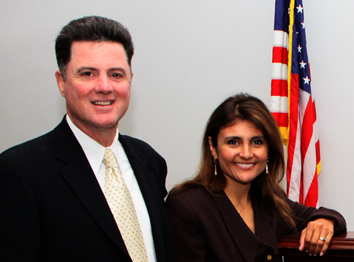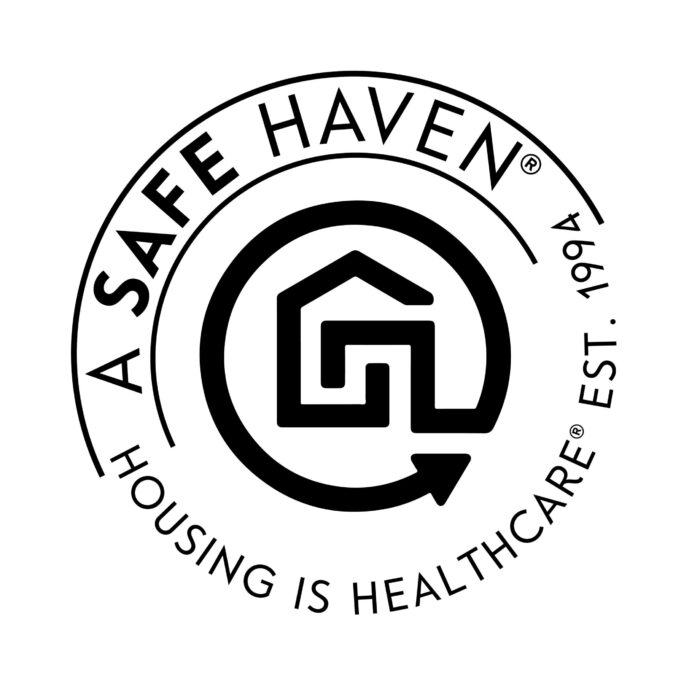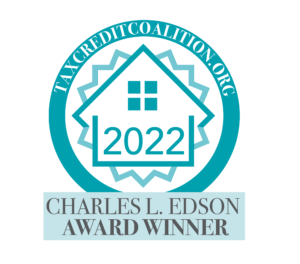
What Do Finance and Social Services Have in Common?
By Matthew Schwarzfeld, Council of State Governments Justice Center
Eighteen years ago, Neli Vazquez-Rowland and her husband Brian started A Safe Haven, a network of shelters in Chicago that address the causes of chronic homelessness and teach residents how to live without drugs and alcohol. Neither Neli nor Brian had a traditional social service background: both formerly worked in the financial services sector as financial advisors.
Today, A Safe Haven has a $16 million annual budget and offers over 1300 beds (across 16 sites) for addiction and mental health treatment for low-income Chicagoans. It also manages 600 affordable housing properties, provides primary healthcare, places people in jobs, and operates half a dozen private businesses that employ former residents—a significant portion of whom have a criminal record.
The couple had a personal motivation to start A Safe Haven. In the 1980s and early 90s, Brian struggled with serious alcoholism and was in and out of rehab. Through this experience, the couple discovered how few services were available for people with serious addictions—especially for those who couldn’t afford private clinics.
For the first five years, they funded operations out of their own pockets (A Safe Haven is now funded through a combination of public, private, and corporate sources). Both Neli and Brian left the financial sector to run the enterprise—though their skills and training as financial analysts continues to guide their work.
“It takes more than a big heart and a desire to help,” Mr. Rowland told the alumni magazine of Chicago’s Loyola University in April 2011. “It takes very resourceful people with business skills, the ability to pull in investors, and ways of developing empirical evidence to get foundation grants.”
We recently spoke with Ms. Vazquez-Rowland about how her background in finance influences her work. According to Ms. Vazquez Rowland, one of Chicago Magazine’s 2010 Chicagoans of the Year, the two worlds aren’t as far apart as they seem.
CSG Justice Center: Coming from the financial services world, you have a unique perspective on the social services field. When you opened A Safe Haven in 1994, what was your impression of how social services were generally provided to low-income people facing chronic homelessness and addiction?
Neli Vazquez-Rowland: We quickly realized there was a tremendous amount of fragmentation of services for people in crisis. My husband and I experienced this personally. We had to go through so much to put the pieces back together [as he faced his alcoholism]. We found that too often both the services and the funding agencies operate in complete silos. People with a drug or alcohol addiction need a seamless service delivery system. Otherwise what’s to prevent them from falling through the cracks?
We didn’t find this network of services, so we decided we could offer our own personal resources to help patch the gap. In doing this, we wanted to bring greater standards, accountability, professionalism, and credentialing to what seemed to us to be not a very well shaped field. It seemed like a cottage industry.
At first, we thought we would work in the field for just a little while. When we converted a property we purchased [which had been a crack house] into a residential treatment facility, we thought we’d renovate it and sell it later on. But as soon as we saw the impact we were making—and that we had turned something terrible for the neighborhood into a positive that helped people turn their lives around—we decided it would have been heartless to walk away from it. So after five years of self-financing, we decided we needed to expand and started seeking outside funding.
CSG JC: A Safe Haven is unique in that it not only provides services, but also operates several businesses that clients have an opportunity to work in. Can you talk more about the “social business enterprise” aspect of A Safe Haven?
N V-R: Initially, when we started A Safe Haven, our mission was to help people in crisis who were homeless—the vast majority due to drugs and alcohol. So we started in the recovery business. Over time we saw the need for providing other services, like long-term treatment, education, life skills training, job training, employment, and affordable housing. Everything we’ve added over the years has been based on where there’s a demand. If we can’t find services in the community—and we have linkage agreements with hundreds of partners in the area to whom we refer our clients for needed services—then we go out and get funding and create those services.
We learned that the people we were seeing every day face many initial barriers to getting back on their feet. People who are ready to move on to their own apartments may be shut out of the market if they have bad credit or a criminal background. So we developed our own affordable housing. We run it as a separate business; we’ve essentially become landlords, but we still provide case management support.
Another barrier many of our clients face is finding a job. This is especially true for those returning from prison or for the people we work with who come from one of the drug courts in the city. So we developed our own businesses. These are for-profit enterprises run by our foundation [which is separate from the service division]. Our goal is to help people achieve sustainable self-sufficiency by giving them a soft landing back into society and equipping them with tools, services, and ways to connect back into mainstream society. We have a pest control business, through which we employ veterans (20 percent of our employees are veterans); a landscaping business, which has contracts from the city of Chicago and commercial businesses; a culinary arts program; the affordable housing division; a housekeeping service; a training program for customer service and sales professionals; and a cosmetic nail care line called Be! Products.
CSG JC: Do a lot of the people enrolled in A Safe Haven’s service programs end up working for one of the social business enterprises?
N V-R: Yes. In total, at the foundation [the umbrella organization that coordinates A Safe Haven’s social business enterprises] we employ 180 people, and 40 percent are graduates of our service programs. There are over 4,000 people enrolled in our services and who reside at our sites annually. The average length of stay is three months. Once we feel they’ve hit certain benchmarks and have demonstrated a real commitment, we then introduce them to workforce case managers. We ask ourselves, ‘How can we apply what they learn through us to real-world skills?’ A lot of them do on-site job training, including paid internships at one of the social business enterprises. After their training and education, we either employ them at one of our ventures or we introduce them to employers who have come to trust and expect quality employees from us. We continue to invest and invite investors to invest alongside us to help us grow our social business enterprises into profitable ventures to create more jobs and help meet the demand from our graduates.
CSG JC: How does your background in finance shape your work?
N V-R: I think we probably talk about the importance of “return on investment” more than your average service provider. At A Safe Haven, we have always asked ourselves the same question that we asked about our investment portfolios: ‘What kind of return of investment are we getting?’ This question informs everything—budgeting, allocation of resources, everything. Providing effective services is a matter of allocating our resources in a way that gives all of our stakeholders the highest return on investment. You can see why we’d focus on return on investment for our funders. But we also use the term when we talk about our residents. Their investment is their time. If they only have three months to get their life back on track, I want to make sure they’re making the best investment of that time.
This approach has been very important in getting our work funded. In 1999, when we first decided to seek outside funding [for the first five years, Ms. Vazquez-Rowland and her husband privately financed operations], we commissioned a study by researchers at Northwestern, which was eventually published in the American Journal of Public Health. We felt it wouldn’t be appropriate to approach a state funding agency without an empirical study showing that our approach worked. In other words, we wanted to be able to give them data to allow them to make a good business decision for taxpayers. We later used that study to go to the Illinois Department of Corrections and Department of Human Services.
CSG JC: A Safe Haven really seems to emphasize collecting data.
N V-R: It’s all about metrics. Are we utilizing and effectively deploying our resources to programs that are most-needed for our residents? We make sure that everyone who participates in our programs has been assessed so we know what he or she will need to really benefit. We assess to try to understand the underlying reasons that someone is in crisis, and we try to solve that for them through our services.
When we first entered the field, we felt too often social service and funding agencies weren’t necessarily basing their decisions on data. This has always been a very high priority for us. From the beginning, we invested in a state-of-the-art information technology system that tracks all of our residents. We have data going back to when we first started—which made the Northwestern study possible.
CSG JC: Do you think the field is starting to better appreciate the importance of data collection?
N V-R: Yes, I do. Funders are starting to talk more about funding decisions based on data. I serve on a commission in Illinois called “Budgeting for Results”—you’re starting to hear people use this kind of language. The silver lining of the economy is that we’re starting to rethink the way we’re allocating our precious few resources. It’s something that’s way overdue. We can’t continue to fund systems that don’t offer taxpayers a return on their investment. I have a mission to change the paradigm in our delivery system. It’s really important for our nation to invest in programs that are offering the biggest return on investment. I hope to see a paradigm shift where money is invested based on return on investment for all stakeholders. That would mean these programs are working to save lives, break the cycle of poverty, and are sustainable.
CSG JC: I thought it’s interesting how your marketing materials emphasize the income your clients earn once they’re placed in a job—that participants have earned $3.8 million in wages. Can you explain the marketing logic there?
N V-R: We want to show the world that we help people make money and that they’re supporting themselves, paying taxes, and members of communities. There’s a huge return on investment for helping people in crisis get back on their own two feet.
For example, we had a client who is now 53, but was 17 when she started using heroin. She’s been arrested something like 120 times, and has been to prison seven times. Every single time she’s been under the influence of drugs or alcohol. If you were to add up the costs to our country from all the arrests, court appearances, and nights she’s spent in prison over last 36 years—not to mention that she had children in the foster care system or with family members—those costs are simply incalculable. She’s now working, making a living wage, paying taxes, and has reunited with her family and now has custody of her children. That’s a big impact, we think, and we want to draw people’s attention to that as much as possible.
CSG JC: The fact that you’re not only supported by public agencies and philanthropies, but also by private corporations, seems to be a great strength. How much of that is owed to the fact that you worked in that world?
N V-R: It’s definitely a factor. We’re very much speaking the same language as them. They have responsibilities to their shareholders, and social responsibilities to be good citizens. A Safe Haven helps them achieve both of these goals. Because we serve such a broad population and offer a broad range of services, we can help those corporations achieve their unique goals, whether it is to work with veterans, provide education and job development, or something else.
By pairing government and corporate funding, we can make each of their contributions go a little further. When the Department of Labor audited us, they were amazed to see that we not only provided job training, but also housing and treatment. Because the DOL contract comes with strict restrictions on how we can spend the money, it is important to have private and public resources from other government agencies to help us fill gaps—we can use it to buy a guy glasses, sheets, his work uniform, or false teeth. We can use it to pay for treatment and housing services that make participants ready for the job training program. By combining these resources, we are able to achieve both a job placement and retention rate of over 80 percent for our DOL contract participants over a period of three years.
CSG JC: What’s the biggest lesson you’ve learned over the years? What would you want new programs serving people coming out of jail and prison to know?
N V-R: You really need to invest in bringing expertise and professionalism to your organization, because you may only have one shot of working with someone and you have to get it right. It’s critical that everyone you’re accountable to—for example, your funders, your clients, your referral partners—have full confidence in your recommendations. Reputation is so important, and you have to focus on it.
As we move forward, we hope we can just focus on directing our resources to programs that are providing results and that we can support with empirical data. By continuing to stick to our knitting and focusing on results and outcomes, we believe that at the end of the day the money will come; donors, corporations, and public agencies will gravitate to what’s in the best interest of all of our stakeholders. We have to keep at it—for the financial and human cost of doing nothing is too great.
National Reentry Resource Center, Council of State Governments Justice Center


